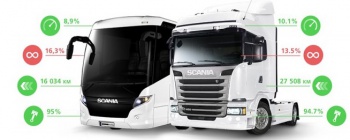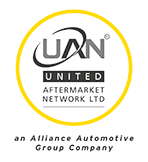
Looks for intelligent mobility
The Transport Systems Catapult (TSC) was set up by Innovate UK, the UK’s innovation agency to promote Intelligent Mobility by using new and emerging technologies to better manage the transport of people and goods.
The organisation is currently running projects to assess the feasibility of tracking vehicles and freight involved in sea and road transport, with a view to improving fuel efficiency and reducing congestion.
“One of the key areas is data”, says Dr Andrew Traill, Principal Technologist for Freight and Logistics at TSC, “Data about the vehicle, data about how it is performing, where it is going to and from, via what. Equally data on the goods is important as well.”
For the data to be made available, vehicle manufacturers might need to become more involved, by building in far more sensors that enable collation of the data. “The key here is also sharing that data”, continues Dr Traill, “If you’re running a fleet, it’s good to understand what’s wearing out. I’m minded of the way that in the aviation industry, all the working parts seem to have lots of sensors around them. This makes it easier to recognise when parts are stressed or need replacing. That type of information could be of benefit to maintenance programmes and compliance requirements, making that simpler, without interfering with operations. The objective would be to automate as many of the functions as possible, minimising what drivers and fleet managers need to do.”
The ‘internet of things’, where devices and systems communicate directly with each other is an area that TSC is looking at, particularly where routing and scheduling is concerned. “The concept that we are hoping we can push forward is where the systems themselves for routeing and scheduling would actually collaborate to better manage the overall total traffic movements”, says Dr Traill.
“It’s a real generalisation, but at the moment, everyone uses their own system and they all decide that they have to be at a certain place at a certain time. It all looks optimised on their own systems, it’s the best for them, but they are all doing it at exactly the same time and they end up on the same piece of road at the same time and it causes the usual congestion and blockages particularly on the routes leading to terminals and ports.
“The challenge is, how do you prevent that from happening, while still maintaining the best solution for each operator and their customers? The barrier to getting them all to talk to each other is that you would have to let them in on the inside behind the firewall and people don’t like that concept. They say, “Hang on, you’re in our system, looking at all our data and we don’t like that.” So we’re looking at how to get around that problem and still manage that optimisation and we’re looking at it not just for road, but for multi-modal operations as well. There are project proposals being formulated at the moment around trying to deal with this.”

 Click here to open the navigation menu
Click here to open the navigation menu